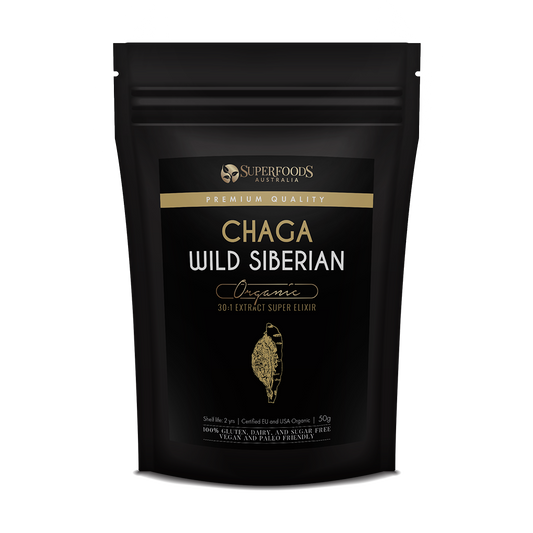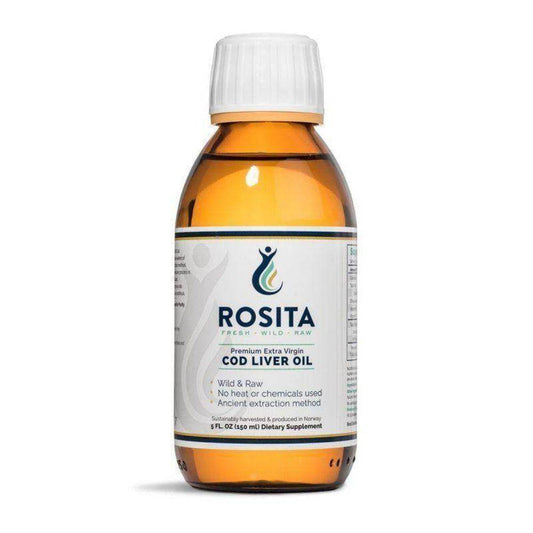If you’ve watched the Netflix special “Fantastic Fungi”, you probably have an idea already just how fantastic the Lion’s Mane mushroom is. In this documentary about the fungi world, the spotlight was briefly shone on this super mushroom beautifully.
If you haven’t seen it yet, go add it to your list and watch it when you have time!
We’re not associated with the film, but we highly recommend it. Especially if you want to learn more about the wonders that mushrooms can do for your body.
In the film, several species of fungus we’re introduced but, in this piece, we’re going to dig a little deeper and learn more about Lion’s Mane mushroom specifically. So read on and get to know this fantastic mushroom!
Origins
Like most of the super mushrooms that we know today, Lion’s Mane mushroom was first discovered and used in Eastern Asia around 2,000 years ago. Specifically in China and Japan.
This fungus is famous for its weirdly distinctive appearance that resembles a shaggy lion’s mane. Hence, the name. But in China and Japan where it originally came from, it’s called hou tou gu and yamabushitake, respectively.
Thanks to its distinct appearance, it also earned a lot of nicknames including hedgehog mushroom, pom-pom mushroom, monkey head mushroom, bearded tooth mushroom, and so many others.
This mushroom grows naturally in dead and decaying logs. But in the modern world, Lion’s Mane is grown commercially in oak logs, beech sawdust, and sometimes, even brown rice.
It was believed that the Buddhist monks from the ancient era first used a powdered extract of Lion’s Mane mushroom to fix a cup of tea. This concoction was said to have enhanced their brainpower and increased their focus during their meditation.
After its discovery, its popularity grew and was also used to treat several ailments and was used in ancient Asian cuisine.
While Lion’s Mane has been a staple in both Chinese traditional cooking and herbalism for years, it was only during the 1950s that its use was standardized.
In 1988, China started growing Lion’s Mane mushroom artificially using logs and polypropylene bags. Since then, Lion’s Mane sprang up like mushrooms throughout the region, quite literally.

Does Lion’s Mane mushroom grow in Australia?
Lion’s Mane is grown all around the world and there is a native Australian species which grows wild here.
The products in our Lion’s Mane mushroom collection are both homegrown and sourced from overseas.
Our Australian Grown Lion’s Mane Mushroom is grown from spores which have been sourced from an Australian native Lion’s Mane species and is grown in the Yarra Valley in Australia.
Check out our Lion’s Mane collection here.
Health Benefits of Lion’s Mane Mushroom
Contrary to popular belief, taking Lion’s Mane mushroom either as a dish or as herbal tonic tea is more than just a fad.
There are significant studies that link the intake of Lion’s Mane mushroom to several potential health benefits, from digestive to cognitive health and immunity.
Here’s how eating this mushroom or drinking it in supplement form could potentially benefit you, health-wise:
1. It could boost mental functioning
It’s no secret that our cognitive functions deteriorate as we age. As we get older many people experience memory loss and declining mental functioning.
Now, while Lion’s Mane can’t cure these conditions, research has been done that suggests Lion’s Mane may help boost a person’s mental functioning.
According to a study, this tonic herb fungus contains two special compounds that can stimulate the growth of brain cells. These compounds are called hericenones and erinacines.
These compounds were put to the test in research on Japanese elders with mild cognitive impairment. After four months of taking the lion’s mane mushroom dry powder, improved mental functioning was seen among the subjects.
The data gathered in the mentioned studies only go to show the potential health benefits of Lion’s mane mushroom.
2. It may help improve your digestive health
Aside from possibly improving one’s cognitive health, Lion’s Mane mushroom is believed to also potentially help to protect you from stomach ulcers, which is a common digestive condition in Australia.
Quick fact: One in three Australians that are over 40 years old are at risk of getting a stomach ulcer.
While there are several causes of this disease, the main culprit is a bacteria called Helicobacter pylori. This organism is responsible for about 60% of all stomach ulcer cases and 90% of duodenal ulcers.
In a 2015 study, it was shown that the polysaccharide fraction in Lion’s Mane mushroom extract is the active component in protecting against gastric ulcers.
This component inhibits the growth of Helicobacter pylori in the digestive tracts, thus preventing the development of an ulcer.
3. It may aid in reducing inflammation and oxidative stress
Several studies suggest that Lion’s Mane mushroom contains strong anti-inflammatory and antioxidant components that could help counter the impact of several illnesses.
Inflammation is a natural response of the body to combat against illnesses and infections, however, chronic inflammation, caused by a variety of conditions can impact our health negatively.
Some animal studies have shown Lion’s Mane as being effective at reducing levels of inflammation and oxidative stress in rodents. More studies on humans need to be done to confirm the effectiveness, however, the potential ability to reduce inflammation shouldn’t be ignored.
These are only some of the potential health benefits that you can get if you include Lion’s Mane mushroom in your diet.
But how do you incorporate this herbal wonder into your diet?
Well, you can either harvest or buy the head of Lion’s Mane and cook a vegan meal out of it. You can also buy Lion’s Mane Powdered Extract or Lion’s Mane Tincture and incorporate them into a drink or dish.
If you’re still not sold on this mushroom, we know why. You’re probably thinking:
Does Lion’s Mane even taste good?
You bet! The best thing about Lion’s Mane mushroom is that it’s more than just a medicinal wonder. It’s also a gastronomical treat!
It may look weird but trust us, it doesn’t taste weird at all. Unlike most mushrooms and other herbs that you can find in the wild.
This fungus has a mildly sweet and seafood-like flavour. Its taste is reminiscent of scallops or crab and lobster meat. Texture-wise, the Lion’s Mane is chewy and has a meat-like tenderness.
No wonder why this mushroom has been making rounds in the vegan community as a new ingredient for hearty and healthy meals!
Can’t imagine how it tastes and feels like in your mouth? Well, why don’t you see it for yourself? Below are some easy recipes that you can make using Lion’s Mane mushroom.

4 Delish and Healthy Lion’s Mane Mushroom Recipes
1. Lion’s Mane Mushroom Steaks
Ingredients:
- Lion’s Mane Mushroom- Salt and Pepper
- Butter
- Olive Oil
Steps:
1. Slice the mushroom into half-inch thick cuts.
2. In a dry pan, fry these cuts over medium heat for 5 minutes. Important: don’t put oil, yet.
3. Wait for the mushroom slices to shrink. When this happens, it means that the moisture inside the Lion’s Mane has already evaporated, and the fibres have condensed.
4. Now pour the olive oil into the pan. You can also throw in some sticks of butter.
5. Fry until the cuts are golden.
6. Season it with salt and pepper.
7. Lastly, enjoy it with your favourite condiment!
2. Lion’s Mane Crab Cakes
Ingredients:
- Aussie Lion’s Mane Mushroom Powder- Extra virgin olive oil
- Garlic
- Greek Yogurt
- Soy Sauce
- Bread crumbs
- Diced onion
- Egg or egg substitute
- Red wine vinegar
- Chopped parsley
- Smoked paprika
- Lemon juice
- Coconut oil
- Salt and Pepper
Steps:
1. In a bowl, mix the egg, soy sauce, Greek yogurt, lemon, parsley, a splash of olive oil, salt and pepper evenly. Then throw in the breadcrumbs, onions, and the lion’s mane mushroom powder.
2. Using a tablespoon, scoop out equal portions of the mushroom crab cake. Form these portions with your hand.
3. Heat coconut oil in a non-stick pan then fry the crab cakes until you see some browning.
4. Season it with salt and pepper.
3. Lion’s Mane Mushroom Nuggets
Ingredients:
- Lion’s Mane mushroom- Chickpea flour
- Garlic powder
- Cumin
- Coriander
- Cayenne
- Garam masala
Steps:
1. Slice the mushroom into bite-sized pieces.2. Pre-heat a deep fryer to 170 degrees Celsius.
3. Mix all the dry ingredients in a bowl.
4. Add water gradually until a thick batter is formed.
5. Dunk the mushroom slices into the batter one at a time, then put the slice into the deep fryer.
6. Fry for 6-8 minutes until golden brown.
7. Serve with your favourite condiments!
4. Lion’s Mane Mushroom Smoothie
- Lion’s Mane Mushroom Extract- Banana
- Frozen beets
- Dates
- Blueberries
- Chopped cauliflower
- Ice cubes
- Non-dairy milk
Steps:
1. Throw all the ingredients in a blender.
2. Crush until smooth!
3. Pour the smoothie in a glass and top it all off with a cherry!
5. Lion’s Mane Mushroom Hot Chocolate
- Australian Grown Lion’s Mane Mushroom- 1 Cup of Milk of Your Choice
- Hot Chocolate Powder
- Honey (optional)
Steps:
1. Add a cup of milk and a level teaspoon of the Australian Grown Lion’s Mane Powder to a pot
2. Stir as the milk warms to your desired temperature.
3. Add hot chocolate powder once warm (if you are using the extract add it to the warm milk here as well).
4. Add honey if you would like to make your hot chocolate sweeter!

Shop Lion’s Mane mushroom products
Can’t wait to add this fantastic fungus into your collection? Buy our organic Lion’s Mane mushroom products here!
Our collection ranges from Lion’s Mane Mushroom Extract to Lion’s Mane Extract Capsules, Lion’s Mane Mushroom Tincture and Mushroom Coffee!
Buy superfoods here and we’ll deliver them to you wherever you are in the Land Down Under. For orders above $100, we’ll express ship it to you for free!
We accept ZipPay and After pay for fast and smooth transactions!














